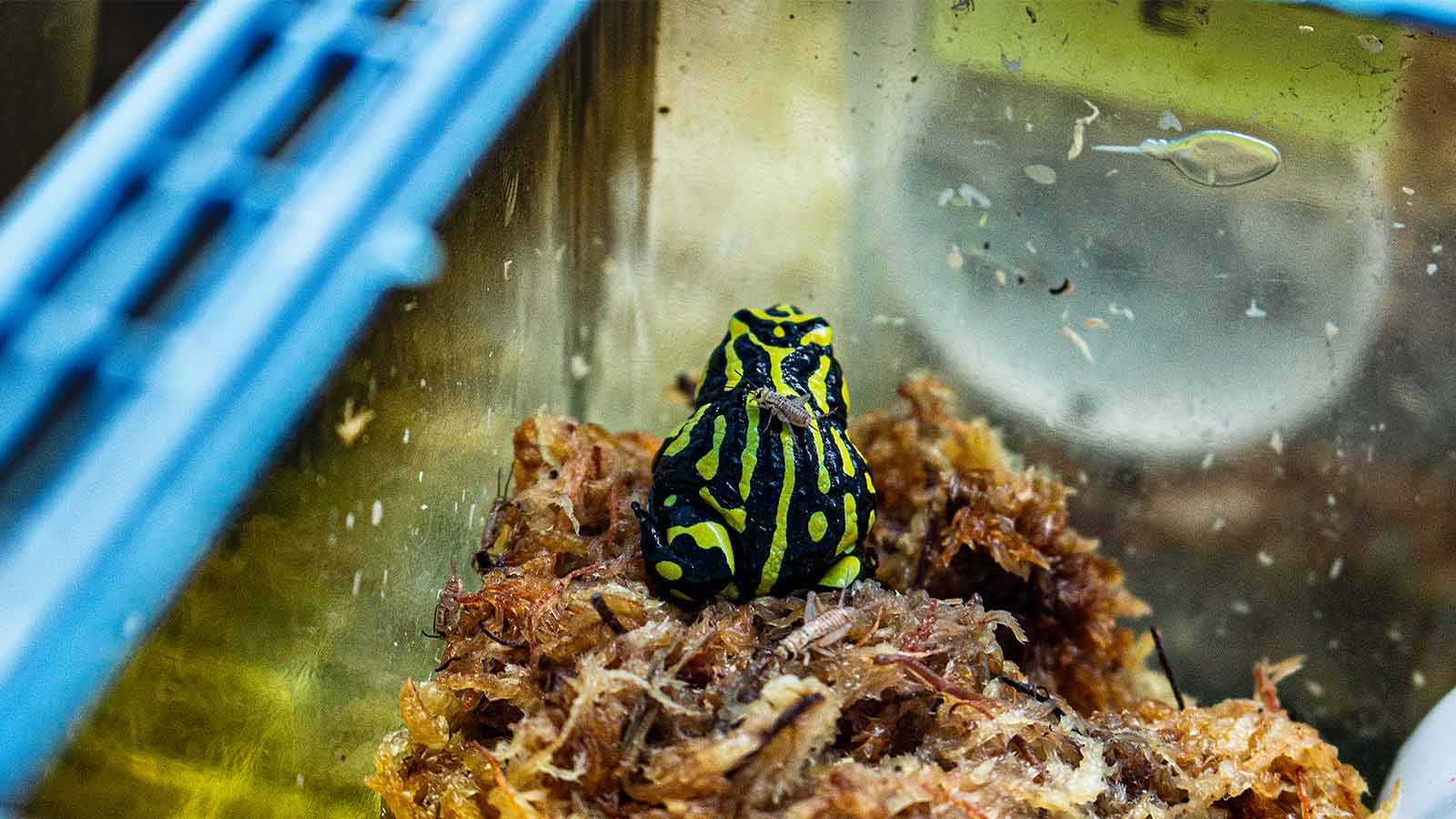How IVF can save our most endangered frogs
The ribbiting world of froggy fertility.
August 16, 2024
Dr. Aimee Silla is using IVF and hormone therapy to help bring endangered frogs back from the brink of extinction, giving these species a hoppier future.
Dr Aimee Silla is boosting endangered frog species through IVF. Yes, you read that right.
She is a reproductive biologist researching hormone therapy and IVF technologies to help conserve threatened amphibians. Put simply, she helps low-libido frogs get in the mood to reproduce and, failing that, can intervene with IVF.
When examining why some frog species are in extreme decline, the usual suspects of global warming, natural disasters, habitat destruction, urbanisation and pollution are at play.
However, Dr Silla highlights that one of the most significant factors is an ironic link between human fertility.
Xenopus laevis, an African clawed frog, was used to diagnose human pregnancy up until the 1960s before modern diagnostic technologies. They would inject urine into the skin of a female frog, and if it produced eggs, that was considered a positive pregnancy reading.
However, imported Xenopus laevis are believed to have introduced the fungal disease Chytridiomycosis into native frog populations.
"A lot of species like the Corroboree frogs were very abundant until 1970s or 80s, and then we saw population decline almost overnight," Dr Silla explains.
"Xenopus laevis was shipped around the world for pregnancy testing, and this is, unfortunately, what we believe led to the initial spread of the Chytrid fungus."
Breeding programs in captivity
Dr Silla's work in amphibian fertility varies between assisted and unassisted methods. The first stage of breeding in captivity involves learning about how species like to mate, and getting the animals into the same tank, similar to popular reality dating programs.
"Often, we will see that there might be one or two 'stud' males, which the females prefer. For many species we also observe this in the field, so it's not necessarily an unnatural construct of captivity," she says.
These situations then require some matchmaking from the researchers to enhance the desirability of the less popular frogs.
"If a male is in a breeding tank and doesn't reproduce in one year, then the following year you might then put that male into a paired scenario and use some added enticement with hormone therapy."
Even though the 'stud' males might appear to have superior qualities, ensuring all genotypes are represented in breeding programs safeguards the genetic diversity of the population and future generations.
 Corroboree frog in a breeding program.
Corroboree frog in a breeding program.
IVF and freezing sperm key to frog conservation
To further secure the genetic diversity of populations, the team turns to IVF to help with breeding. The protocols are like those used in human IVF in that hormone therapy, egg and sperm collection, and in vitro fertilization is involved, but beyond that, the differences are vast.
"Some aspects are much simpler. For most frog species, and all of those in Australia, fertilisation occurs outside the body. Fertilised embryos will develop without parents, and we can put them in aquaria to hatch tadpoles," Dr Silla says.
The biggest challenge is obtaining high-quality sperm, Dr Silla says, in which not all frogs are an equal match.
"The Booroolong frog responds very well to hormone therapies. We get large concentrations of sperm to work with. Compared to the Corroboree frogs, they are a species with a low sperm count. The main difference is one has large testes and produces a lot of sperm, and the other species unfortunately doesn't," Dr Silla explains.
Sperm freezing has become a big focus of Dr Silla's research for this reason. She is working with Taronga Zoo to biobank sperm for the long-term sustainability of conservation breeding programs.
"Unfortunately, we can't yet cryopreserve amphibian eggs, as they are quite large compared to human eggs. Frog eggs have a large yolk, which results in freeze damage. However, frog sperm freezes quite well," she says.
Technologies for cryopreserving sperm are improving rapidly, with her team currently looking into using antioxidants to protect the sperm during the process.
Making leaps and bounds
When it comes to improving froggy fertility, Dr Silla is in it for the love.
"It's believing that I'm making a difference that drives me. In research, you can experience a lot of set-backs, but if you stay focused on the small wins, they will make a difference over time."
The research of Dr Silla and her team is making important strides to ensure that endangered species like the Baw Baw, Booroolong, and Corroboree frogs are around for generations to come.
"Conservation work is always a team effort. Individuals may be working on individual research, but it’s bringing it all together and integrating knowledge that makes a difference. I'm very fortunate to work with some incredible and passionate people.”
Dr Silla's work demonstrates UOW’s commitment to United Nations Sustainable Development Goals, in particular SDG 14 (life below water) and SDG 15 (life on land).